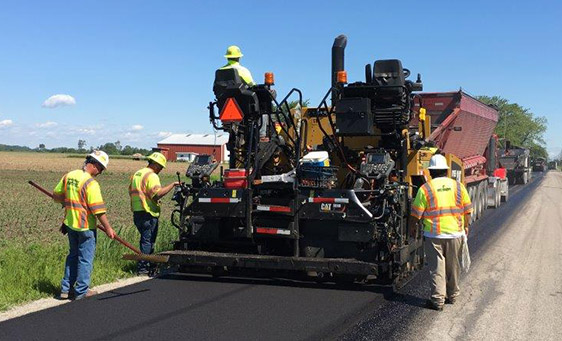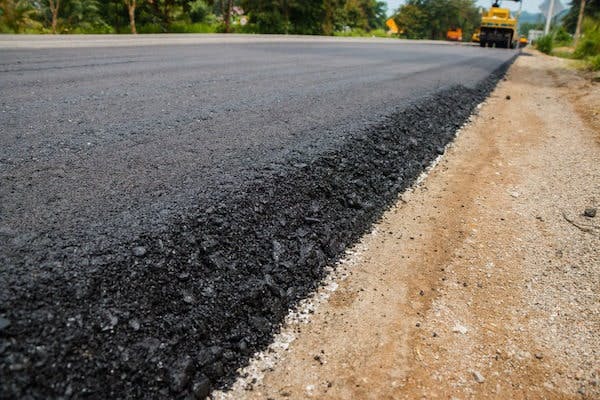Opening the Secrets of Warm Mix Asphalt Innovation
Discovering the depths of warm mix asphalt modern technology reveals a world where thorough processes and precise formulations converge to shape our roadways and facilities. The blend of binders, accumulations, and fillers isn't just a building job however a strategic orchestration of toughness and efficiency. As we peer into the complex dancing of parts, a tapestry of strength and sustainability unfolds. What exists under this surface area of asphaltic proficiency, and what secrets wait to be introduced in the world of paving developments?
Importance of Warm Mix Asphalt
Warm Mix Asphalt plays an important role in modern framework advancement due to its resilience and cost-effectiveness. As the most typically used paving material for roadways, freeways, and vehicle parking whole lots, Hot Mix Asphalt uses an array of benefits that contribute to its relevance in building tasks.
The toughness of Warm Mix Asphalt stems from its make-up, which consists of aggregates, binder, and filler products that are thoroughly picked and mixed to meet details performance needs. In general, the value of Hot Mix Asphalt in infrastructure development can not be underrated, as it proceeds to be a foundation of modern building and construction techniques.
Components of Asphalt Mixes
The make-up of asphalt blends consists of very carefully picked aggregates, binder, and filler materials that are crucial for attaining certain performance needs. Accumulations are the main part of asphalt blends, providing strength and stability. The binder, generally asphalt or asphalt cement, holds the aggregates with each other and offers versatility and toughness to the mix.
The mix and percentage of these elements play a considerable function in determining the top quality and performance of the asphalt mix. Engineers very carefully design the mix to meet details needs, considering factors like web traffic quantity, environment problems, and pavement life expectancy. Proper option and harmonizing of aggregates, binder, and fillers are important for creating long lasting, long-lasting asphalt sidewalks.
Mixing and Production Strategies

When the accumulations are selected, the binder, often asphalt cement, is added to bind the products together. The binder's high quality and quantity substantially affect the mix's stamina, versatility, and resistance to environmental factors. Additionally, fillers like moisturized lime or Portland cement might be Get More Information incorporated to boost details attributes of the asphalt mix, such as its workability or wetness resistance.
During manufacturing, the aggregates and binder are warmed, typically in between 250-325 ° F(121-163 ° C ), to facilitate mixing and guarantee correct covering of the accumulations. The blending procedure needs to be thorough to accomplish an uniform mix that promotes the desired performance qualities of the asphalt. Numerous methods, such as set mixing or drum mixing, are employed to achieve consistent and high-quality asphalt blends my company for building and construction tasks.
Aspects Affecting Asphalt Performance
Aspects affecting asphalt performance include a variety of variables that influence the longevity, longevity, and general top quality of asphalt pavements. One essential aspect is the high quality of materials made use of in the asphalt mix.

Ecological problems additionally affect asphalt efficiency. Temperature level variants, dampness infiltration, and traffic lots can all influence the structural integrity of the sidewalk. Design factors to consider, such as sidewalk density and water drainage, are vital in making certain the long-lasting performance of the asphalt sidewalk. By carefully taking into consideration these service providers, engineers and aspects can optimize asphalt YOURURL.com performance and improve the life span of pavements.
Sustainable Practices in Asphalt Innovation

WMA permits for the production and positioning of asphalt blends at lower temperature levels compared to typical hot-mix asphalt, resulting in minimized power usage and greenhouse gas discharges. The use of permeable asphalt mixes can aid minimize stormwater overflow concerns by enabling water to infiltrate with the pavement and right into the ground, promoting all-natural water filtration and reenergize processes.
Conclusion
Finally, warm mix asphalt innovation plays an essential function in modern infrastructure development due to its sturdiness and cost-effectiveness. By very carefully stabilizing elements, employing correct mixing techniques, and thinking about different aspects, engineers can produce top notch asphalt mixes that stand up to rush hour loads and rough climate condition. Embracing sustainable practices, such as using warm-mix technologies and recycled products, further boosts the ecological kindness of asphalt technology.
Mixing and production methods in warm mix asphalt innovation involve the specific combination and processing of accumulations, binder, and fillers to produce a sturdy and high-performance asphalt mix.Variables influencing asphalt performance include an array of variables that impact the sturdiness, long life, and general high quality of asphalt pavements. Sustainable practices in asphalt innovation encompass numerous efforts aimed at lowering the environmental effect of asphalt production and paving procedures. By including recovered asphalt pavement (RAP) and recycled asphalt roof shingles (RAS) right into new asphalt mixes, the sector can significantly minimize the consumption of raw products and energy, while also reducing land fill waste.
WMA permits for the production and placement of asphalt mixes at lower temperatures contrasted to typical hot-mix asphalt, resulting in lowered power intake and greenhouse gas emissions.